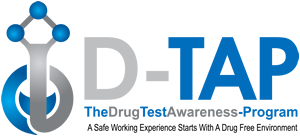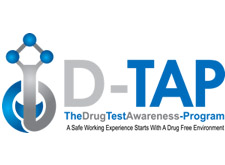Benzodiazepines Abuse (BZO)
Key points
- Benzodiazepine abuse is a growing problem and carries serious risks to health and society.
- Benzodiazepines are commonly used by polydrug abusers, alcoholics and sometimes as primary recreational drugs.
- People who abuse benzodiazepines often take very large doses orally, by injection or by snorting.
- Benzodiazepine use leads to dependence and a withdrawal syndrome which may include convulsions and psychosis.
- Further research is needed on the optimal short-term and long-term management of benzodiazepine abuse.
- The primary source of illicit benzodiazepines is from doctors’ prescriptions.
Who abuses benzodiazepines?
Benzodiazepines are taken for recreational purposes by increasing numbers of drug abusers. The true prevalence is not known but benzodiazepines commonly form part of a polysubstance abuse pattern. Benzodiazepines have been taken by opiate, amphetamine and cocaine users worldwide for about 20 years and are now creeping into the teenage ‘rave’ scene amongst users of MDMA (Ecstasy) and LSD. Various intoxicating drug- benzodiazepine combinations such as ‘Tem-Tems’ (buprenorphine and temazepam) and temazepam and lager are popular.
To begin with, as with alcohol, smoking and cannabis, some of these youths become involved in recreational benzodiazepine use at 13 and 14 years of age.
Second, benzodiazepine abuse is also common in alcoholics. Around 30-50 per cent of alcoholics attending for detoxification also use non-prescribed benzodiazepines. Third, some people (again an unknown number) use benzodiazepines as their primary recreational drug, typically bingeing intermittently on high doses.
Why abuse benzodiazepines?
The most common reason given by polydrug abusers for taking benzodiazepines is that they enhance and often prolong the ‘high’ obtained from other drugs including heroin, other opioids, cocaine and amphetamines. Benzodiazepines are mainly taken along with the primary drug, but sometimes used alone as an alternative or in times of shortage. Second, benzodiazepines alleviate withdrawal effects, including anxiety and insomnia, when supplies of other drugs are limited. Users of stimulants including cocaine, amphetamines and Ecstasy also take benzodiazepines as ‘downers’ to overcome the effects of their ‘uppers’ and to combat hangover effects. In alcoholics, benzodiazepines are used partly to alleviate the anxiety associated with chronic alcohol use, but also because the mixture of alcohol and benzodiazepines produces a hedonic effect. Finally, benzodiazepines, when taken alone in high doses and particularly when injected, can themselves provide a ‘kick’.
Although benzodiazepines in therapeutic doses have been claimed to have little abuse potential compared with other drugs of abuse, their abuse liability may vary along the dose-response curve, becoming greater at doses above the therapeutic range. Diazepam, alprazolam, lorazepam and triazolam have all been shown in clinical laboratory studies to possess abuse liability. Alprazolam 1mg was comparable with 10mg d-amphetamine in scores for ‘elation’ and ‘abuse potential’ in experienced but non-dependent users. ‘High’ ratings for oxazepam and chlordiazepoxide were lower than for other benzodiazepines. The non-benzodiazepine hypnotic zolpidem produced ‘drug liking’ scores similar to triazolam; this drug and the similar non-benzodiazepine hypnotic zopiclone may also have abuse potential.
Which benzodiazepines are abused?
Nearly all the available benzodiazepines have been abused. In general, those which enter the brain rapidly (e.g. diazepam) are preferred to those which are absorbed more slowly (e.g. oxazepam). However, preferred drugs vary between countries and over time depending on their availability and reputation in the illicit drug world. In the UK, temazepam has superseded diazepam, nitrazepam and flurazepam as the most commonly abused benzodiazepine, in line with the increase in temazepam prescriptions and possibly (until recently) because of the availability of easily injectable forms of temazepam from capsules, ‘jellies’, ‘eggs’. In the US, flunitrazepam tablets (‘roaches’) have become popular, partly because of diversion of supplies across the Mexican border. Potent benzodiazepines such as triazolam, alprazolam and lorazepam have also achieved popularity among benzodiazepine abusers.
Routes of administration and dosage
Benzodiazepines can be taken by mouth, inhaled as snuff or injected. The commonest practice is oral ingestion but, recently, novel forms of administration have been used. Intranasal ‘snorting’ of powdered flunitrazepam is described and this method can be used for other benzodiazepines and accompanying drugs such as buprenorphine. However, the main alternative to the oral route is intravenous injection, reported first for flurazepam. Diazepam and other benzodiazepines have been injected but at present temazepam is mainly involved. Temazepam was the most commonly used and had been injected from preparations of capsules, tablets and syrup. Other injected benzodiazepines were diazepam, lorazepam, triazolam, nitrazepam and chlordiazepoxide.
Doses used by recreational benzodiazepine users are usually far in excess of those recommended for therapeutic purposes. Oral and intravenous doses of 100-150mg temazepam and diazepam are common while some youths may take up to fifty tablets of temazepam (500-1,000mg) for hedonic effects.
Sources of benzodiazepines
Benzodiazepines are widely available on the Street and are cheap. A major source is from general practitioners’ prescriptions. Some users attend several practitioners using false names and temporary patient status; others obtain supplies from friends or patients (often elderly people) who exaggerate their needs to their doctors and sell off the excess. Some children obtain them from prescriptions for their parents. Benzodiazepines are also obtained by theft from health centers or retail chemists, and large amounts have been stolen from pharmaceutical warehouses.
Health risks and social consequences
These risks have probably been underestimated. Benzodiazepines are generally believed to be safe in overdose, but deaths following self-poisoning do occur, even when the drugs are taken alone, and a fatal outcome from overdose is more likely with flurazepam and temazepam than with other benzodiazepines. Benzodiazepines also add to the respiratory depression caused by other drugs.
Benzodiazepine use increases the risk of road traffic accidents, especially when driving under the influence of higher doses.
Mental disturbances caused by benzodiazepines include blackouts and memory loss, aggression, violence and chaotic behavior associated with paranoia. Over a third of intravenous temazepam users surveyed used the drug ‘to give confidence to engage in criminal activity’ and there is a high incidence of illicit benzodiazepine use in remand prisoners. The loss of judgment and amnesia caused by benzodiazepines may also be associated with high-risk sexual behavior including casual sexual contacts and unprotected sexual activity which appears to be a particular feature of temazepam abusers. Cognitive impairment, including deficits in learning and memory and in sustained attention, has been shown in many studies of long-term benzodiazepine users, even at therapeutic dose levels, and may persist after benzodiazepine withdrawal.
Regular use of benzodiazepines, especially in high doses, readily leads to physical dependence, evidenced by withdrawal symptoms on sudden cessation (see below).
Many of the risks for injecting benzodiazepine users are common to self-injectors of all types of drugs. It has been claimed that the use of temazepam is especially associated with the practice of sharing injecting equipment, thus increasing the risk of HIV infection and hepatitis. In addition, benzodiazepines, particularly temazepam (whether obtained from capsules, tablets or elixir), are extremely irritating and likely to cause tissue damage. When arm veins become occluded due to local irritation, users may proceed to injecting in the groin, where inadvertent intra-arterial injection has led to amputation. The severity of the addiction which can develop to temazepam is illustrated by the case of a temazepam injector who needed his leg amputated but was later admitted for a second amputation since he had continued injecting into his remaining leg. A second subject, following a leg amputation, injected temazepam gel into his eye, resulting in bilateral blindness.
Dependence and withdrawal symptoms
Dependence and a withdrawal syndrome has been well described in chronic benzodiazepine users over a range of therapeutic and supratherapeutic doses. There is less information on dependence and withdrawal in benzodiazepine abusers, who sometimes use the drugs intermittently or in binges and who often use other drugs. However, in a careful study, Seivewright and Dougal (1993) recorded symptoms in thirty-three polydrug users who for various reasons had abruptly stopped their benzodiazepines but not their other drugs. The results, shown in Table 1, clearly showed that the high dose abusers experienced a profile of withdrawal symptoms similar to, though more severe than that described in low-dose users. The severity of symptoms was significantly related to the size of previous dosage in the abusers. It was notable in this study that the abusers had only stopped their benzodiazepines for 2-3 days, probably before withdrawal symptoms had reached their peak. Even so, four of the subjects reported epileptic fits and there were sixteen reports of hallucinations and/or paranoid ideation. These severe symptoms may be especially common in high-dose abusers and have been reported in other studies. It was also noted that benzodiazepine abusers reported extreme antisocial behaviors in obtaining continued supplies, avoiding disruption of supplies and in drug-seeking behavior when withdrawing. The severity and specificity of the benzodiazepine withdrawal syndrome was typified by one patient’s remark: ‘I’d rather withdraw off heroin any day. If I was withdrawing from benzos you could offer me a gram of heroin or just 20mg of diazepam and I’d take the diazepam every time – I’ve never been so frightened in my life’.









